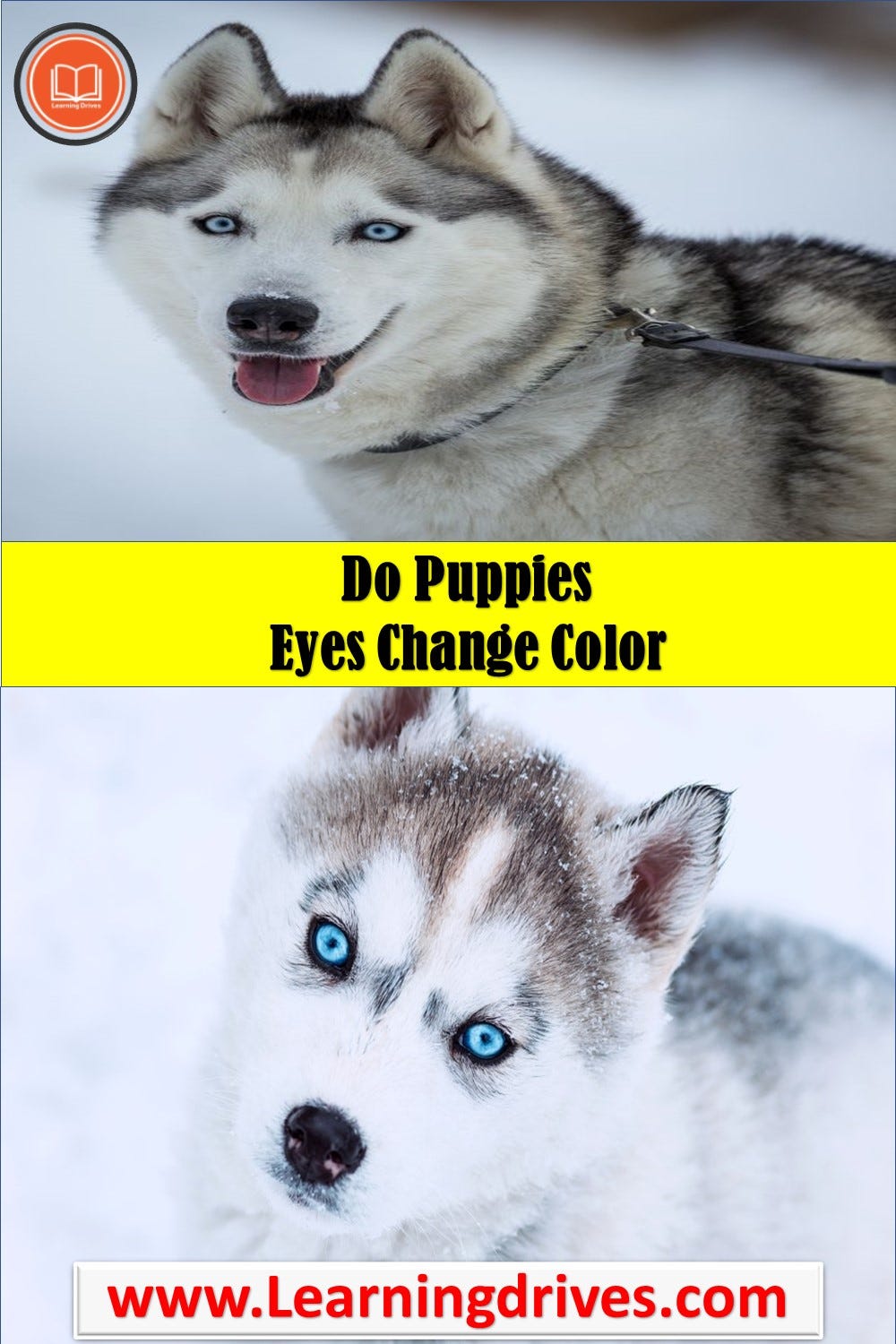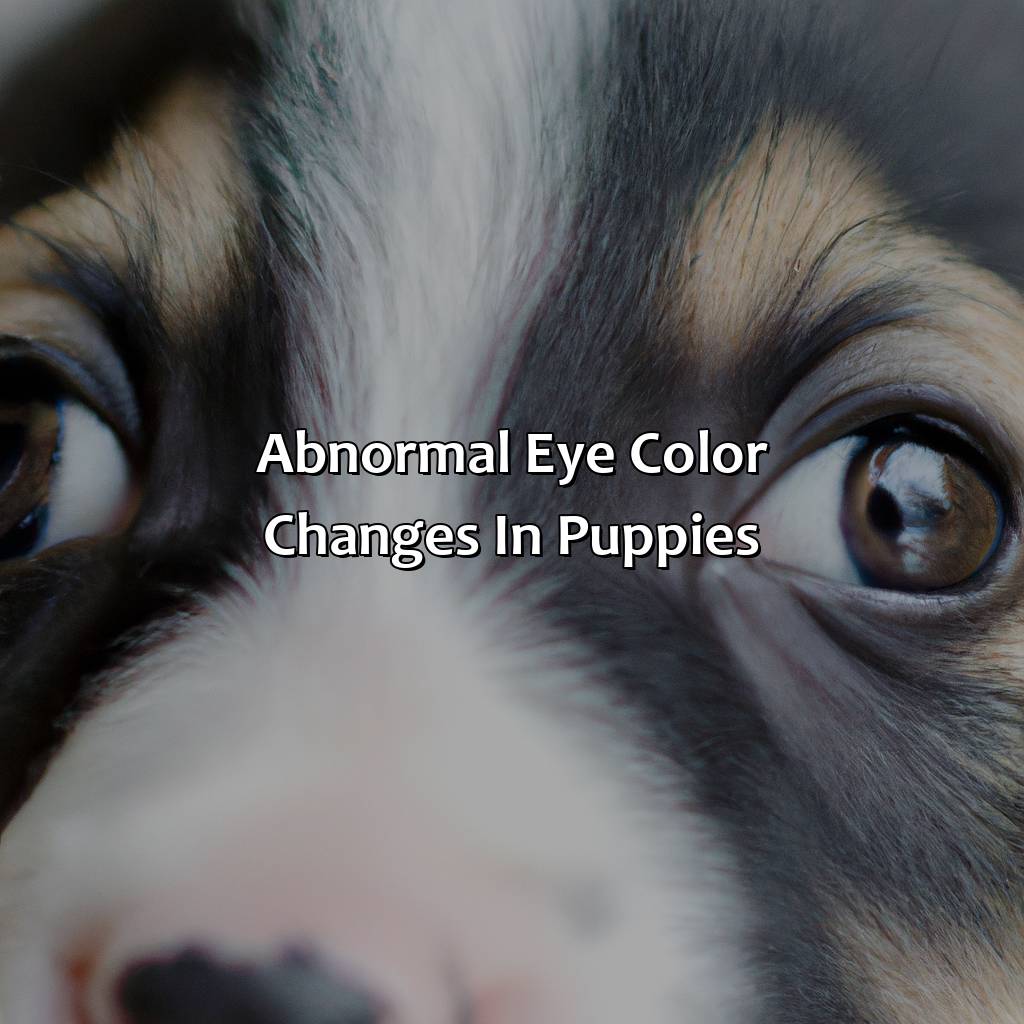Have you ever fallen in love with a litter of puppies, only to be surprised when their eyes change color as they grow? It’s a common phenomenon that often leaves new puppy parents amazed! The journey of a puppy’s eye color is fascinating, and it’s a testament to the incredible changes happening within their tiny bodies as they develop.

Image: medium.com
But when exactly do those mesmerizing baby blues turn into amber, brown, or something entirely different? Read on to learn more about this captivating aspect of puppy development, unraveling the mysteries behind eye color transformation and debunking common misconceptions along the way.
The Magic of Melanin
The key to understanding a puppy’s changing eye color lies within the pigment called melanin. This remarkable substance, produced by special cells called melanocytes, isn’t just responsible for our skin and hair color; it also governs the color of our eyes!
Melanin comes in two forms: eumelanin, which gives us dark brown and black tones, and pheomelanin, which creates lighter shades like yellow, red, and blonde.
The Puppy’s Developing Eyes
At birth, most puppies open their eyes between 10 to 14 days old. While many may assume their eye color is a permanent trait, that’s not always true! In the first few weeks of life, a puppy’s eyes are dominated by a blue-gray hue. This initial coloring isn’t the final product; it’s a temporary phase dictated by the absence of enough melanin in the iris, the colored part of the eye.
The Timing of Transformation
The amount of melanin present in the iris ultimately determines a puppy’s final eye color. The process of melanin production, known as melanogenesis, can take several weeks, even months.
Most puppies experience significant eye color changes within the first 8 to 12 weeks of life, but some breeds can continue to change until they’re around 16 to 20 weeks old.

Image: colorscombo.com
Factors Influencing Eye Color
A puppy’s eye color is intricately linked to their genetic makeup, inherited from their parents. This means certain breeds tend to have specific eye colors, while mixed breeds may display a wider range of possibilities.
Here are some key factors that influence the final eye color:
- Breed: Some breeds are renowned for their specific eye colors, like the Husky with often striking blue eyes or the Australian Shepherd with its mesmerizing brown or blue eyes.
- Genetics: The genes passed down from the puppy’s parents play a crucial role in determining eye color.
- Coat color: In many breeds, a close connection exists between coat color and eye color.
- Other factors: While rare, some cases have linked environmental factors, like light exposure, to minor changes in eye pigmentation.
The “Heterochromia” Phenomenon
Sometimes, a puppy might develop eyes of two different colors, a condition known as heterochromia. This intriguing phenomenon is often caused by genetic variations, resulting in uneven distribution of melanin. While heterochromia is a unique feature, it doesn’t affect a puppy’s overall health or vision.
Debunking Common Misconceptions
The ever-changing world of puppies can sometimes lead to misinformation. Here are some common misconceptions about eye color:
- Myth: “If my puppy’s eyes are blue, they’ll stay blue.”
- Fact: This is not true. While blue eyes are often common in younger puppies, their final eye color may change as they grow.
- Myth: “Eye color is always predictable based on breed.”
- Fact: While certain breeds tend to have specific eye colors, genetics can introduce variations, leading to unexpected eye combinations.
- Myth: “Milk, food, and other elements affect eye color.”
- Fact: These elements don’t change the fundamental genetic blueprint that determines a puppy’s eye color.
Expert Insights and Actionable Tips
Veterinarians and breeders are invaluable resources for understanding eye color changes and other puppy development milestones. They can provide breed-specific insights and answer any questions you may have about your puppy’s unique journey.
Here are some actionable tips to help you navigate your puppy’s eye color transformation:
- Embrace the journey: Appreciate the captivating transformation unfold right before your eyes.
- Consult a professional: Don’t hesitate to contact your veterinarian or breeder for guidance.
- Keep a record: Take photos and note down the changes in your puppy’s eye color as they occur – it’s a fun way to chronicle their development!
At What Age Do Puppies Eye Color Change
Conclusion
The fascinating transformation of a puppy’s eye color is more than just a visual change; it’s a window into their growth and development. As your puppy explores the world, their eyes will continue to evolve, reflecting the vibrant journey they’re embarking on. Remember to cherish these moments, for they’re a testament to the magic of life and the extraordinary bond you’re sharing with your beloved furry companion.
Have you witnessed your puppy’s eye color change? Share your stories and insights in the comments below!






